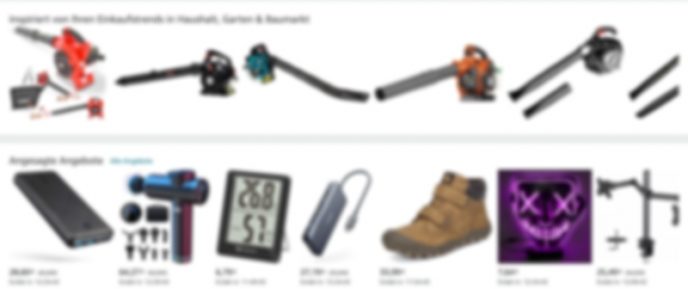Optimering av omvandlingsfrekvens
Conversion Optimisation And A/B Testing

To earn more money from a blog or website, you need to understand how to optimise your site for conversions. A trusted method for achieving this outcome is to do what is termed ‘split’ or ‘A/B’ testing.
YOU’LL LEARN:
- The importance of conversion rates
- Tips for A/B testing
- How to use testing tools
What Is Conversion Optimisation?
Conversion optimisation means increasing the proportion of visitors to your site who actually purchase something – or to encourage more of a specific visitor behaviour (eg, signing up for a newsletter, or opting in for a free report).

First, you tweak or change individual elements of your website or blog; then you measure the impact of these changes on the actions of the visitors. Ideally, you constantly try something new to see what works. Over time, you can then gradually help perfect your site.
What Are The Benefits?
Many site owners think that to earn more money on the web, you need to increase the traffic to their website. Many bloggers and site owners focus on SEO measures, social-media releases, advertising and new content.
Although this marketing-based approach is an important component for success, this strategy very often neglects existing visitors – and can result in site owners missing out on a lot of potential earnings. By understanding and implementing conversion optimisation properly, you can help achieve more sales and more revenue with the same number of visitors.
Many tests show how small changes can have large effects. There is clear evidence that the turnover of online stores has increased by upward changes in the conversion rate: see this revealing article at kissmetrics.com for 100 Conversion Optimisation Examples for plenty of practical examples of how to implement these ideas on your site.
Should you focus on conversion optimisation?
To answer the question, try out a simple experiment into A/B testing with your visitors. If, for example, you know you have 100 visitors a month to your website, you may find it’s difficult to get statistically reliable results due to the small sample size.

So when you try an A/B test where 50 visitors see Button A and 50 see Button B, it’s not a large quantitative measure – though it may still be worth a try to see if you can gather any useful info. However, if you have a few thousand visitors, then you should definitely implement conversion optimisation.
You can use free tools to do so, which are relatively easy to implement and can be connected and set up with little effort.
A/B Tests In Use
An A/B test works quite simply. You simply create two versions of a site element and test them to see which works better. This can, for example, be a different style and type of order button, or even a sales page with or without video. You could also simply change the test on a button.
It’s important that you make only one change. For example, if you changed a number of elements (such as the button, the text, image and more), you won’t know which of these changes was responsible for the results. You also have to compare the two versions in parallel and not in succession.
That is because the results can be distorted by seasonal effects.
Step-by-step example: Optimizely.com
You can perform A/B testing without external tools. So, you could in theory create two sales pages for a product and create a different element on each page, and then set up your site to alternately show visitors the two different versions of your product page.

These would then need to be measured with a statistics tool, where you could compare the clicks and conversion rate of the two variants. However, this could be costly, time-consuming and difficult to do. For a simpler implementation, there are certain special conversion optimisation tools, such as optimizely.com.
With this online service, you can register for free and conduct an experiment at no cost. After logging in, click on ‘new experiment’, give this a name and enter the URL of the optimised page. Then you create a new variant, where you change an element of the page. This change can be made directly into the optimizely.com tool, which saves you having to change the website code.
You can also create multiple versions, each with a change. When starting out, though, narrow it down to just two variants. Next, you have to specify a goal, which is about what the user should do. This could, for example, focus on a ‘Thank you for shopping’ store page; a registration confirmation page for a newsletter; or which of two button types gets more clicks.
Note, however that if you want to improve your affiliate revenue, you cannot specify the store site of the partner program as a target in a rule, since you can not install the Optimizely tracking code there. Instead, you can only count clicks on an Affiliate Link, but that’s still a good optimisation goal and is sufficient for most user’s needs.
Finally, you’ll need some patience until enough data is gathered to assess which option works best. When the best variant is revealed, you can start using it on your website. You can then start a new experiment in which you test something else.
Warning: When testing, it’s necessary to incorporate a reference to the Optimizely cookie in the privacy statements on your own website and to deliver an Opt Out link.
A Note On Significance
It sounds easy to make the decision between two variants, but in practice, this is often not so clear-cut. Not only that, the results of different variants are often quite close to each other, so they aren’t always reliable. Statistics indicate the reliability of such data as ‘significance’, which can be measured on a scale of between 0 and 100 per cent.
The higher the significance, the more reliable the result. 95 per cent significance means that there is a five per cent chance that the result is coincidence. So it makes little sense to opt for a variant, if there is only a 10 per cent significance.
You should keep an experiment running until it has at least 90 to 95 per cent significance. Optimizely.com offers you this analysis, so you can see the significance in the results of each individual variant.
Conclusion
A/B tests can be very useful to help you to increase revenues and to help to optimise your site’s other business-related goals. However, you should use trusted, professional tools and only commit to changing your site elements when there are reliable results.
Bear in mind, too, that to get the most value from your hard work, you should treat conversion optimisation as an ongoing process.
